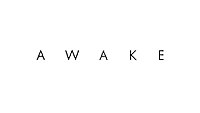
Photo from wikipedia
Deep brain stimulation (DBS), an effective treatment for movement disorders, usually involves lead implantation while the patient is awake and sedated. Recently, there has been interest in performing the procedure… Click to show full abstract
Deep brain stimulation (DBS), an effective treatment for movement disorders, usually involves lead implantation while the patient is awake and sedated. Recently, there has been interest in performing the procedure under general anesthesia (asleep). This report of a consecutive cohort of DBS patients describes anesthesia protocols for both awake and asleep procedures. Consecutive patients with Parkinson’s disease received subthalamic nucleus (STN) implants either moderately sedated or while intubated, using propofol and remifentanil. Microelectrode recordings were performed with up to five trajectories after discontinuing sedation in the awake group, or reducing sedation in the asleep group. Clinical outcome was compared between groups with the UPDRS III. The awake group (n = 17) received 3.5 mg/kg/h propofol and 11.6 μg/kg/h remifentanil. During recording, all anesthesia was stopped. The asleep group (n = 63) initially received 6.9 mg/kg/h propofol and 31.3 μg/kg/h remifentanil. During recording, this was reduced to 3.1 mg/kg/h propofol and 10.8 μg/kg/h remifentanil. Without parkinsonian medications or stimulation, 3-month UPDRS III ratings (ns = 16 and 52) were 40.8 in the awake group and 41.4 in the asleep group. Without medications but with stimulation turned on, ratings improved to 26.5 in the awake group and 26.3 in the asleep group. With both medications and stimulation, ratings improved further to 17.6 in the awake group and 15.3 in the asleep group. All within-group improvements from the off/off condition were statistically significant (all ps < 0.01). The degree of improvement with stimulation, with or without medications, was not significantly different in the awake vs. asleep groups (ps > 0.05). The above anesthesia protocols make possible an asleep implant procedure that can incorporate sufficient microelectrode recording. Together, this may increase patient comfort and improve clinical outcomes.
Journal Title: Acta Neurochirurgica
Year Published: 2022
Link to full text (if available)
Share on Social Media: Sign Up to like & get
recommendations!